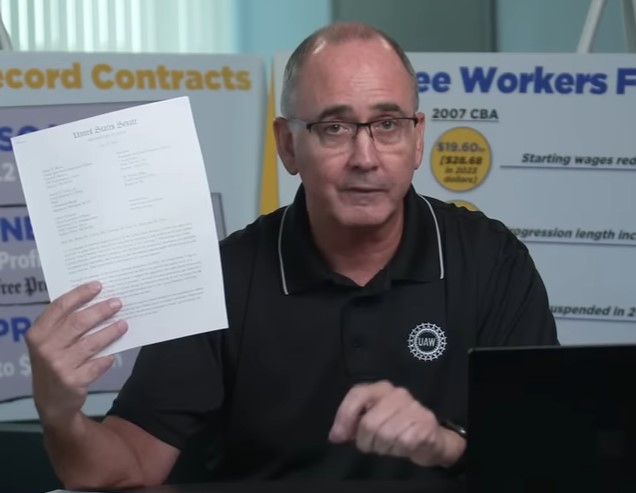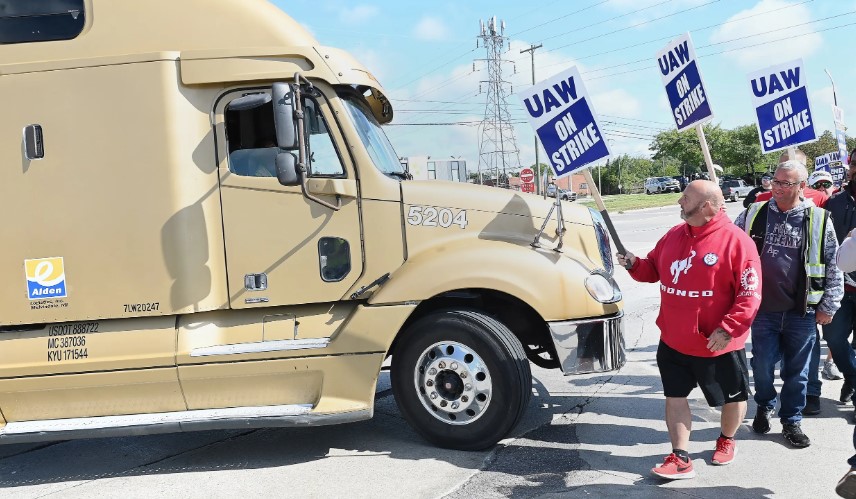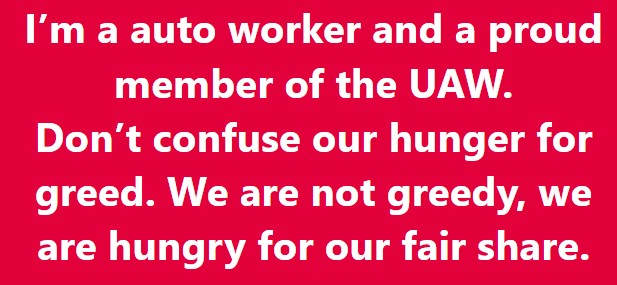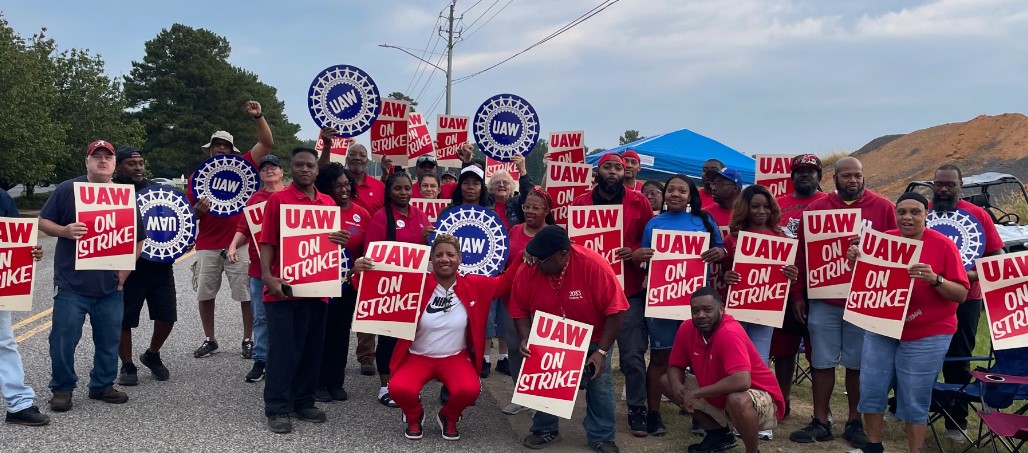By John Pickard
In a move that paralleled the election of Sharon Graham as General Secretary of Unite, the United Autoworkers in the USA elected a ‘reformist’ candidate Shawn Fain as union president last March. He has committed to represent his members more aggressively and in the last week has launched the union on a strike against the ‘big three’ US car producers.
Fain was elected with over half the votes cast and at the traditional meeting with car executives in July, it was reported that he declined the traditional handshake with the bosses present, preferring instead to meet and shake hands with his members. He was elected after a corruption scandal in the union which led to prison sentences for former union officials and a fine against Chrysler, some of whose personnel were implicated.

It looks, at least to begin with, that Fain is leading the union in a serious attempt to recover the living standards lost by car workers over recent years. Bob Bruno, a director of labour studies at the Universithy of Illinois told the Financial Times, that the car makers should not have been surprised about the strike. They had become “too used”, he said, “to having too cozy a relationship with the UAW leadership.”
The union are are using social media and their resources to explain that the car companies have made record profits and can therefore afford a record contract. Among the union demands are:
- The elimination of ‘tiers’ whereby workers doing the same job are paid differently depending on when they were hired.
- A “big wage increase”, noting that CEO’s have increased their own pay by 40% in four years.
- Restoration of ‘COLA’ – cost of living allowances to protect future pay.
- Defined benefit pensions for all workers and a significant increase in pensions.
- Re-establishment of medical benefits
- An end to the abuse of temporary workers
- More paid time off – what UK workers would call a better ‘work-life balance’.
There are around seventy car plants across the USA, but the UAW is striking in what it sees as three key plants belonging to Ford, General Motors and Stellantis (formerly Chrysler), respectively in Michigan, Missouri and Ohio. Although the union has a huge strike fund of $825m, it is hoping that a targetted approach to strikes will eke out funds better, whilst still hitting car makers. Those UAW members who are on strike, less than a tenth of the union’s 146,000 members, will get, according to the Financial Times (September 20), $500 a week in strike pay.

Car plants closely interconnected
The tactic being employed by the UAW they have called a “stand up strike” and it means that some workers walk out of a plant, while others stay on the job. The idea of targetted strikes is that is will hit supply chains and therefore impact on the whole industry. The car plants are all closely interconnected in terms of parts supply and, with the now well-established policy of ‘just-in-time’ parts shipping, a relatively small number of strikes should disrupt production on a much wider scale. Fain is threatening to increase the scale of the strikes and move onto the plants where more popular cars are produced, unless the car manufacturers come forward with a meaningful offer.
There are huge dangers in targetted strikes, however. Already Ford has laid off 600 non-striking workers in Michigan and GM is threatening to do the same at their a big plant in Kansas. Whatever the aims of the UAW, this tactic will tend to muddy the waters because workers on strike will receive strike pay, but those who are laid off will have to seek other unemployment benefits – and that is a more complicated process.
At least some UAW members are questioning the tactics being employed. With some workers on strike pay and others being laid off, the tactic will inevitably raise questions about the risks and hardships of the strike being shared out evenly. Most importantly, the vital solidarity that is necessary for any industrial struggle will tend to be fractured and splintered from plant to plant. Not surprisingly, the union has to have detailed explanations on its website and on social media explaining what is meant by a “stand up strike” and continueing to work under an “expired” agreement.

Dangers of limited strikes
“Every plant should be on strike, not just selected plants,” one Ford worker from Kansas wrote on the Facebook Live feed. “Strike means strike. That’s the way I was brought up. No more deadlines, just do it.” (Financial Times, September 20). Another from Detroit made a similar complaint: “I feel bad that only some of us are out there on the lines,” he wrote. “It makes us look weak in my opinion.”
It remains to be seen how this strike will pan out. It is possible that the UAW leadership may be pushed by the recalcitrance of the car bosses to move towards an all-out strike. It is not ruled out either, that Biden may intervene and attempt to force a ‘compromise’. But judging by the comments of rank and file UAW members on social media there is a solid determination to win back the living standards that have been lost over the last fifteen years. Either way, it is a strike that should be closely watched by trade unionists in Europe.
UAW Twitter feed:
https://twitter.com/UAW?ref_src=twsrc%5Egoogle%7Ctwcamp%5Eserp%7Ctwgr%5Eauthor



